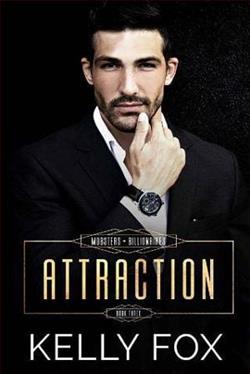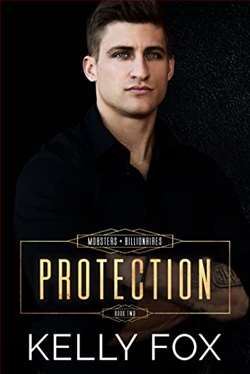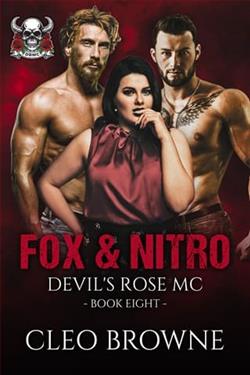Page 40 of The Last Days of Marilyn Monroe
Marilyn keeps going even when Russell is too exhausted to continue.
Lifemagazine reports from Stage 3 on the Fox lot:
Marilyn sings and dances with a surprising technical competence. Full-fleshed and fancy-free, she and her dark-haired girlfriend, played by Jane Russell, start the show off with a bang in tight red dresses for the song “The Little Girl From Little Rock.” … In her biggest number she spurns a whole panel of penniless and prostrate admirers and gives their fallen forms the benefit of her philosophy of life: “Diamonds Are a Girl’s Best Friend.”
Marilyn nearly wasn’t even cast. It’s her $18,000 rate that convinces producers to choose her over their top choice, Betty Grable, whose rate is $150,000. Russell earns $200,000 for her work—though Marilyn quickly proves that she is a true co-star. Though she does have to plead for her right to a dressing room. “Look, after all, I am the blonde, and it isGentlemen Prefer Blondes!” she argues.
But the studio claims she’s not a real star. “Well, whatever I am, I am the blonde!”
On set, Marilyn tells Howard Hawks that she’s thought of a new line for the script: “I can be smart when it’s important, but most men don’t like it.” The director adds it to her final scene inGentlemen Prefer Blondes.
The shoot is set to wrap in January, but first there’s Fox’sannual holiday party to attend. She leaves the party late, dreading another lonely Christmas.
As she opens the door to her dark house, she gets a strange, fearful feeling. But when she flicks on a light switch, she sees her holiday dreams come true.
A huge Christmas tree covered in silver baubles is arranged on a stand. Propped up against it is a large handwritten cardboard sign.
MERRY CHRISTMAS TO MARILYN
Sitting on a chair in the corner, smoking a cigarette and nursing a bourbon and soda, is Joe DiMaggio.
“Oh Joe! Oh Joe!” She collapses on the floor at his feet. Hugging his knees, she looks up, her eyes full of tears. “You said you were spending the holidays in San Francisco with your family and now you are here! What a surprise!”
“Merry Christmas, my darling.” He smiles at her and gently asks, “Why are you crying?”
“It’s the first time anyone ever gave me a Christmas tree.”
CHAPTER 29
MARILYN HAS EVERY INTENTION of dressing in the new clothes Joe DiMaggio’s bought her, but in January 1953, the costumes Dorothy Jeakins designed for her role inNiagarabecome the talk of the film’s successful release. One dress in particular—the fuchsia off-the-shoulder one from the party scene—dubbed “the Rose,” is a sensation, and so is Marilyn for the alluring way she wears it.
MARILYN INHERITS HARLOW’S MANTLEruns the headline in theNew York World & Telegram,where Erskine Johnson declares in his column: “Hollywood took 14 years, three-score screen tests and a couple of million dollars to find a successor to Jean Harlow.”
In February, an offer from costume designer William Travilla proves too tempting to resist. The gold lamé dress with sunburst pleats he’s created forGentlemen Prefer Blondescan be hers to wear at the 1953PhotoplayAwards.
Film censors deem the garment—its plunging bustline secured solely with V-shaped iron bars—so risqué that it maybe shown only from the back. The studio decides to let her wear it anyway, strategizing that Marilyn modeling the censored gown will help promoteGentlemen Prefer Blondesahead of its August 1953 release.
By design, Marilyn must be sewn into the dress. To slim down, she undergoes two sessions of colonic irrigation. Joe DiMaggio complains that the dress “looks as if it has been painted on” and walks out of the fitting, suddenly called “to San Francisco on family business,” Sid Skolsky explains in his column.
As Marilyn crosses the ballroom of the Beverly Hills Hotel wearing the golden gown to acceptPhotoplay’s New Star Award, she’s also subjected to a spontaneous critique.
“She looks vulgar,” hisses Joan Crawford, who’s currently filming the MGM musical dramaTorch Song,about a tough, unhappy Broadway star.
Crawford’s jealousis the response that ripples through the audience. The gossip columnists play the moment for all it’s worth.
“With one little twist of her derrière,” one writes, “Marilyn stole the show. The assembled guests broke into wild applause. Two other screen stars, Joan Crawford and Lana Turner, got only casual attention. After Marilyn every other girl appeared dull by contrast.”
Another likens the motion of her buttocks to “two puppies fighting under a silk sheet.”
William Travilla designs over thirty gowns for the stylish comedyHow to Marry a Millionaire,which co-stars MarilynMonroe, Lauren Bacall, and Betty Grable as three models who rent a luxury Manhattan apartment in order to attract wealthy husbands. Marilyn’s costumes, for once, are relatively demure. “It was the first time that Marilyn was not self-consciously the sex symbol,” screenwriter Nunnally Johnson says. “The character had a measure of modesty.”
Shooting on location in New York City and Idaho in March and April 1953, Fox spares no expense on the first romantic comedy ever to be filmed with the CinemaScope lens billed as “the new miracle medium.” Bacall, best known for her sultry noir performances with husband Humphrey Bogart, is returning to the screen after a three-year absence. She’s been cast in her first comedic role, as the trio’s unofficial leader, Schatze Page. Marilyn uses her gifts of physical comedy as the nearsighted Pola Debevoise, though the part she’d originally wanted was Loco Dempsey, which is played by Grable—whose hefty salary of $150,000 is three times what Bacall is earning, and in another stratosphere from Marilyn’s $750 a week rate.
For more than a decade, Betty Grable has been Fox’s top star—her legs famously insured by the studio for $1 million—but it’s clear that Marilyn is gaining on her popularity. Tensions are expected on set, but Grable deftly defuses them.
“Honey, I’ve had mine. Go get yours. It’s your turn now,” she tells her nervous co-star. To United Press reporter Aline Mosby, Gable declares, “Marilyn’s the biggest thing that’s happened to Hollywood in years. The movies were just sort of going along, and all of a sudden—zowie!—there was Marilyn. She’s a shot in the arm for Hollywood!”
The two develop a close friendship. Even Lauren Bacall, initially irritated by Marilyn’s constant lateness, eventually sets itaside. “I couldn’t dislike Marilyn. She had no meanness in her—no bitchery,” says Bacall.















